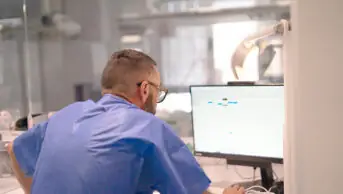
Shutterstock.com
The number of items dispensed from distance-selling pharmacies in England grew by 45% in 2020, an analysis by The Pharmaceutical Journal has revealed.
Using dispensing data and lists of distance-selling pharmacies provided by NHS Business Services Authority through the Freedom of Information Act, it has been found that these pharmacies dispensed 42 million items in 2020.
This is an increase on the 29 million items dispensed by distance-selling pharmacies in 2019, with some pharmacy leaders putting most of this increase down to changing habits amid the COVID-19 pandemic.
However, distance-selling pharmacies — which provide pharmacy services at a distance, including over the internet — still hold only a small share of the overall dispensing market.
In 2020, these pharmacies dispensed just 4.1% of the 1.03 billion items dispensed by all community pharmacies that year.
This compares with 2.8% of items dispensed through distance-selling pharmacies in 2019.
Nevertheless, distance-selling pharmacies grew rapidly in 2020. In January of that year, they dispensed 3.2% of all items, growing by 1.5 percentage points to 4.7% in December 2020. Meanwhile, the number of items dispensed overall only increased by 0.4% over the year.
For comparison, in 2019, distance-selling pharmacies dispensed 2.7% of all items in January, growing by 0.3 percentage points to 3% that December.
This comes as 65% more patients chose to nominate distance-selling pharmacies as part of the electronic prescription service (EPS) — rising from 999,498 in March 2020 to 1,649,984 in March 2021.
‘Bricks-and-mortar’ pharmacies saw a 22% increase in their EPS nominations, but still hold the majority of nominations, increasing from 33,444,449 in March 2020 to 40,786,573 in March 2021.
In July 2019, The Pharmaceutical Journal revealed that distance-selling pharmacies had comprised 2.4% of the EPS nomination market — a proportion which has since risen to 3.9% as of March 2021.
Echo, which shares parent company McKesson with LloydsPharmacy, saw the largest increase in nominations, from 131,740 in March 2020 to 438,081 in March 2021.
Toby Anderson, chief executive of McKesson UK, said the growth has been “clearly helped” by the COVID-19 pandemic.
“But that business was growing very quickly pre-COVID, in any event. That’s because consumers really value the convenience that technology gives them,” he said.
He added that providing patients with the choice to have their prescription “dispensed via more modern methods, such as through online, or whether they wish to click and collect and have it dispensed in a LloydsPharmacy”, has also helped the business grow faster.
“It’s giving the customer the power and the option to choose, which I think is a really exciting, compelling experience for the customer,” he said, adding that “close to 10% of our [Echo] customers are now wishing to [order online] … then collect in-store”.
Leyla Hannbeck, chief executive of the Association of Independent Multiple Pharmacies, warned that online pharmacists “are not familiar with local doctors, while a local community pharmacist is in frequent communication with a patient’s doctor”.
“We’re local medicines experts, a source of professional advice and counselling — we’re aware of patients’ health histories, health needs and the medicines they take,” she said.
Hannbeck added that community pharmacy “must not allow the argument to develop that online dispensing saves the NHS money”.
“It is a myth. All pharmacies are paid in the same way from the same pot, whether they are online or located in the high street,” she said.
“All that will happen is that because the online supplier has a lower cost base, they will make more money which will be taken out of healthcare services and given to shareholders.”
“Delivering medicines remotely will reduce the amount of funding available to bricks-and-mortar pharmacies,” she continued. “They will cease to employ as many local, trained, skilled staff and not be able to supply the same levels of care and attention. Eventually, they will close completely.”
What is the electronic prescription service?
The electronic prescription service (EPS) enables prescribers to electronically send prescriptions to a community pharmacy of the patient’s choosing.
In August 2019, NHS Digital told The Pharmaceutical Journal that the percentage of prescriptions issued through the EPS was expected to reach “the mid-90s” within the subsequent 12 months.
Under ‘phase 4’ of the EPS, which began as a pilot in November 2018, prescribers can also issue an electronic prescription even for patients who have not nominated a pharmacy, or wish to switch pharmacy on a ‘one-off’ basis.
In April 2020, IT system supplier EMIS increased the pace of its roll-out of phase 4 in light of the COVID-19 pandemic, allowing patients to collect a prescription from another pharmacy if their usual pharmacy was temporarily closed.
By September 2020, phase 4 EPS was available automatically in all GP practices that use TPP SystmOne and EMIS Web.


